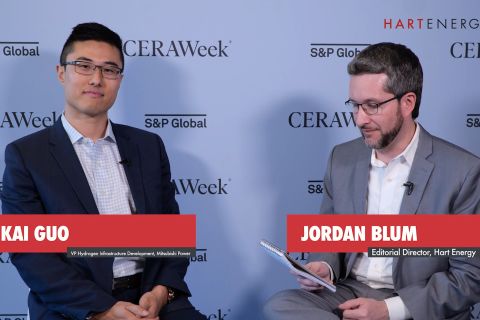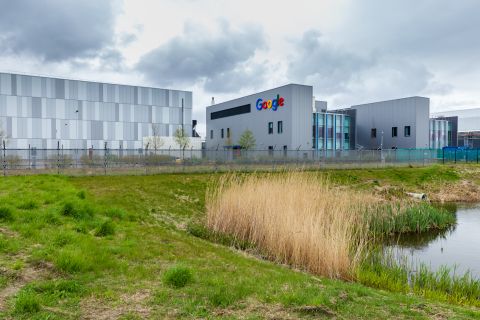
The U.S. has some catching up to do—especially with a $165 billion capex target to hit by the end of 2014.
Global E&P spending is forecasted to climb to $712 billion in 2014 up 6.2% from 2013, led by the largest E&P market in the world—the U.S., according to Barclays 2014 Global E&P Spending Update.
If the forecast holds, it will be the fifth consecutive year of annual worldwide spending gains since the industry’s 2009 downturn.
The U.S. gained ground as Barclays Research revised results from its December spending survey. Based on Barclays’ forecast, U.S. operators will spend about $127 billion during the remainder of 2014.
As a country, the U.S. is the single largest E&P market. It is now anticipated to see a year-over-year spending gain of 9.6% from 8.5% in 2013.
Some of the additional capital could end up buying or selling assets, said James C. West, lead oil service and drilling analyst for Barclays Capital.
“Some spending likely moves to M&A,” he said.
North America will see the majority of spending growth in 2014, where capital budgets are expected to rise 8.4% (up from expectations of 7.3% in December) as independent E&Ps, which dominate the NAM land markets, take advantage of robust commodity prices and record resource inventories.
“I would actually argue that we should actually see U.S. capex up 12.5% in the last three quarters of this year. We see a very significant expansion unfolding,” West said.
North America continues to be the largest market for E&P spending, making up about 30%of the global market. The United States is far and away the largest single country for E&P activity with about 23% of the global total.
“We think there is room for additional upside amid the current commodity price environment and the potential for increased capital deployment into the U.S. markets stemming from geopolitical risk internationally, notably Iraq,” he said.
Improved cash flows resulting from higher oil prices may lead to additional near-term spending, particularly in the U.S., where operators are much quicker to react to commodity price fluctuations, West said.
With capex expected to rise in the U.S. by nearly 10% year over year, West said he expects $14 billion of additional capital will make its way through domestic oil fields in 2014.
Despite U.S. expansion in the U.S. land rig count to start the year—about 10% greater year-to-date—capex budgets appeared somewhat constrained in the early months of 2014.
Companies surveyed by Barclays anticipate a strong 2015 for capital spending as well. The vast majority of companies expect to increase spending levels in 2015 with about half anticipating double digit increases on top of the record breaking 2014 levels. Of those surveyed, 76% indicated that drilling budgets will be higher next year while 6% are expecting spending declines.
The spending outlook is the result of research conducted across a six-month period in which more than 300 oil and gas companies were asked worldwide about their spending intentions for the upcoming year. Barclays then revisited respondents sometime in May.
In the U.S., upstream activity is on a clear path higher relative to Barclays previous spending expectations and potential for increased gains.
The results for the U.S. market are that companies with product lines focused on new horizontal well completions are sitting pretty. That sector will likely be the target where E&Ps’ direct the lion’s share of their incremental capital, West said.
Service companies such as Baker Hughes International (NYSE: BHI) are favorites, he said.
About 90% of capital budgets are directed to well completion activity and services with a small remainder allocated to drilling costs.
An abnormally high number of uncompleted wells in the first quarter of 2014 (the backlog for completions in the Bakken was 60% higher than levels in 2013) indicate the majority of E&P capital was held on the sidelines during the first quarter, West said.
“Starting early the second quarter, the U.S. land rig count has shot higher and we think a surge in well completion activity is unfolding in its wake,” West said.
A spike in oil price could result from the rapid deterioration of security in Iraq. Over several days, Brent crude and WTI pricing were up 4% in the past five trading sessions.
North American operators benchmarking capital budgets off WTI have nudged their 2014 price assumptions higher since Barclays’ last survey, but not materially.
Operators are budgeting for an average 2014 WTI price of $91 per barrel compared to a forecast average of $89 per barrel in December. Both levels fall below actual prices of $100 since the start of the year and which currently sit at about $107.
The current Barclays Research estimates for WTI in the third quarter of 2014 are $101 rising in the fourth quarter to $109.
Operators are similarly undervaluing gas prices. West said companies are simply being conservative.
Recommended Reading
Exclusive: Mitsubishi Power Plans Hydrogen for the Long Haul
2024-04-17 - Mitsubishi Power is looking at a "realistic timeline" as the company scales projects centered around the "versatile molecule," Kai Guo, the vice president of hydrogen infrastructure development for Mitsubishi Power, told Hart Energy's Jordan Blum at CERAWeek by S&P Global.
Google Exec: More Collaboration Needed for Clean Power
2024-04-17 - Tech giant Google has partnered with its peers and several renewable energy companies, including startups, to ramp up the presence of renewables on the grid.
Hirs: Aspirations Meet Reality—The Undisclosed High Cost of the Energy Transition
2024-04-16 - The nation is trying to keep up with the growth of renewable power resources, but before transmission lines can be built, the power plants must first have interconnects with the grid.
Nova Clean Energy Acquires BNB’s 1-GW HyFuels Portfolio in Texas
2024-04-16 - Covering about 25,000 acres on the Texas Gulf Coast, HyFuels’ power supply will be split evenly between wind and solar energy.





